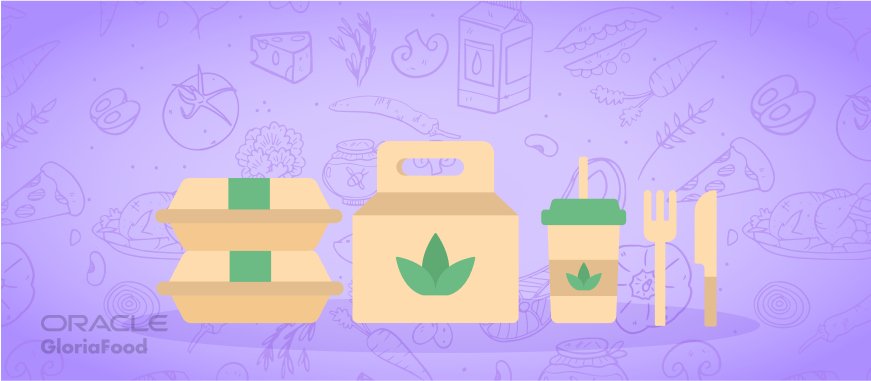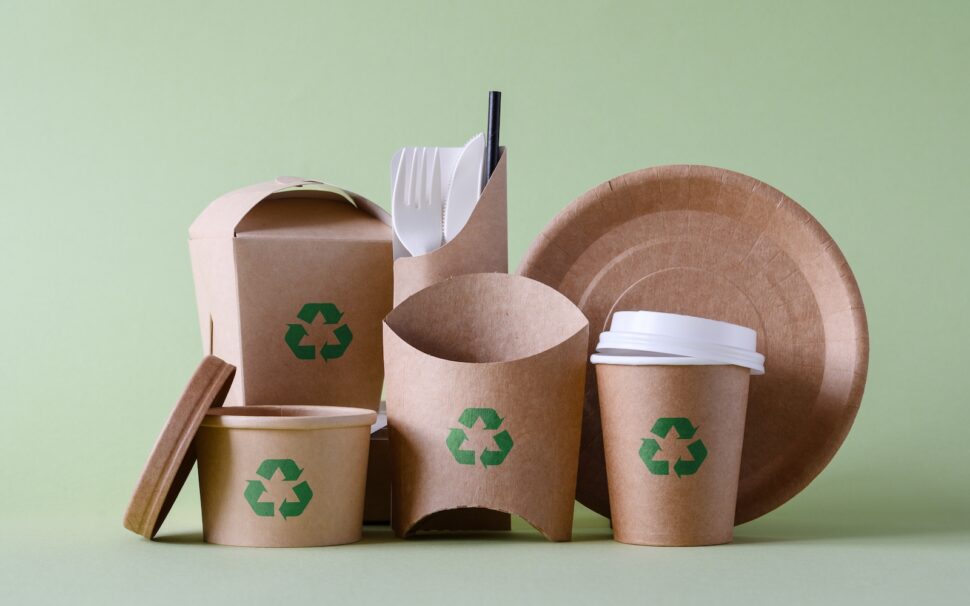With the pandemic closing a majority of indoor and outdoor dining worldwide, there was a massive surge in demand for takeout food and delivery services.
This type of business model requires restauranteurs to adapt in several ways. One of those is the implementation of packaging to suit the takeout model.
With Millenials and Gen Z starting to demand sustainability in all aspects of life, implementing traditional plastic or styrofoam takeout containers is short of business suicide.
The pandemic only exacerbated the change in attitude toward plastic as many lawmakers worldwide started to phase out and ban single-use packaging.
But this change has created new challenges for everyone from burger shops to at-home cake businesses, whether they’re actively trying to reduce their carbon footprint or not.
Those who care about reducing wastage and emissions have to work hard like every other restaurant while sourcing and implementing sustainable packaging supplies and eco-friendly business practices.
But these changes don’t have to be handled individually, nor do they have to contradict one another.
Now, more than ever, it’s easier to implement sustainable packaging into your business. Here are some advantages of eco-friendly packaging for restaurants and several ways to transition your eatery away from single-use plastics and onto a more sustainable consumable.
Plastic Statistics That Prove the Importance of Eco-Friendly Packaging
Whether sustainable or not, packaging poses its own challenges for restaurants. Between 2005 and 2018, plastic packaging waste generation in the EU increased by 21 percent to 17.2 million metric tons. Styrofoam, the go-to material for takeout for so long, takes 500 years just to start breaking down.
The challenge is that these petroleum-based solutions meet food-handling requirements better than any readily available eco-friendly solutions.
These single-use plastics keep food fresher for longer when compared with eco-friendly solutions that can be a lot more porous and don’t seal as well. But the easy alternative is seldom the right one.
How COVID Amped up the Pressure on the Hospitality Industry
You don’t need to be told the impact that COVID-19 and restrictions had on the hospitality industry. What grew, as a result, was online delivery apps for food and groceries. Called Q-commerce, this e-commerce business model will only cement itself as a new business model in years to come.
As we all start to grow more time-poor, being able to order food in an app and have it delivered in as little as 15 minutes becomes an attractive solution to many of us.
But with this new model comes more consumption and more waste. If you’re a restaurant that uses online delivery as a source of income, the packaging in which you deliver your food plays an even more critical role in your branding – now, more than ever.
Advantages of Eco-Friendly Packaging for Your Restaurant
Customer loyalty is an alarmingly overlooked metric of many businesses. However, it’s much quicker, cheaper, and easier to get a customer to buy from you again than acquiring a new one.
So with 79% of consumers and their purchasing power putting their loyalty to brands that make a difference, a change to a more eco-friendly image helps to strengthen a sustainability message and therefore increases brand loyalty.
Read more: How to Make a Restaurant Environmentally Friendly: 5 Tips & Secrets
Reusable packaging is a solution that automatically comes to the mind of many entrepreneurs. Remove the ‘single use’ from ‘single-use plastic packaging,’ and remove a large part of the problem, right?
That might be so in e-commerce and other business models. Still, sustainable and disposable packaging is the safest way to maintain food quality while adhering to food safety standards in the takeout industry.
One of the main advantages of eco-friendly packaging is that while single-use sustainable options cost more, research shows that UK consumers are willing to pay 25% more for brands with some form of sustainable packaging policy.
The main takeaway is this: If you’re to pass the costs of sustainable food packaging onto the customer, it may pay to promote the price hike alongside your new packaging solutions.
How to Combat Single-Use Plastic Food Packaging
As the pandemic starts to fade and in-person activities resume, don’t expect the demand for single-use plastic products to follow suit. For brands that want to phase out plastics and implement something sustainable, here are several ideas to keep in mind.
1. Compostability
Packaging made from compostable materials is the go-to solution for eateries looking for sustainable packaging. Sugarcane, bamboo, mushroom, or seaweed are the most common materials, but packaging made from other post-consumer waste, like bio-packaging, is also typical.
In the right environment, these materials can break down into nutrient-rich dirt in as little as 12 weeks. Certifications may indicate products compostable at home or only suitable for industrial compost facilities.
2. Simplification
The easiest route to restaurant sustainability is simplification, and minimizing what you already use is the quickest way. For example, don’t include utensils in take-home orders.
If food is being consumed at home, it’s safe to say that there’s already cutlery to use at home. To be sure, give customers the option of ordering cutlery if they need it. When requested, make that cutlery wood, bioplastic, or something else that can break down in landfills.
3. Going the extra mile
Given the time and cost constraints of the industry, moving away from disposable plastic containers isn’t always feasible. If businesses can’t implement sustainable packaging, they can still make other sustainable changes.
Just 14% of restaurants in the US have a compost program, according to the National Restaurant Association. Composting your waste is an excellent alternative if you can’t change your packaging.
In Krakow, Poland, the city council collects leftover coffee grounds from local stores. The council then throws the coffee grinds on footpaths during winter instead of salt and sand.
This act reuses the waste of your business and helps the local community.
It’s also worth looking into the disposal of all products, not just food-related ones. Many cooking oils can be reused through your local sanitation department.
Next Steps
Eco-friendly packaging isn’t an easy course to navigate. But it’s important to remember that substitution is often quicker and more cost-effective than redesigning something from the ground up.
Many materials on the market can help eateries lower their carbon footprint and appeal to a more eco-conscious crowd. For managers that are reluctant to change, remember that your customer is changing.
While they want the food you’re providing, the younger generation wants to give their money to a brand that shares their concern for the environment.
One of the many advantages of eco-friendly packaging is increasing your customers’ loyalty. Sustainability in your ingredients is a must, but it’s also time to visit a restaurant supply store to improve your packaging.
This article is a guest post.


